The Middle Ages 1066 -1485 William the
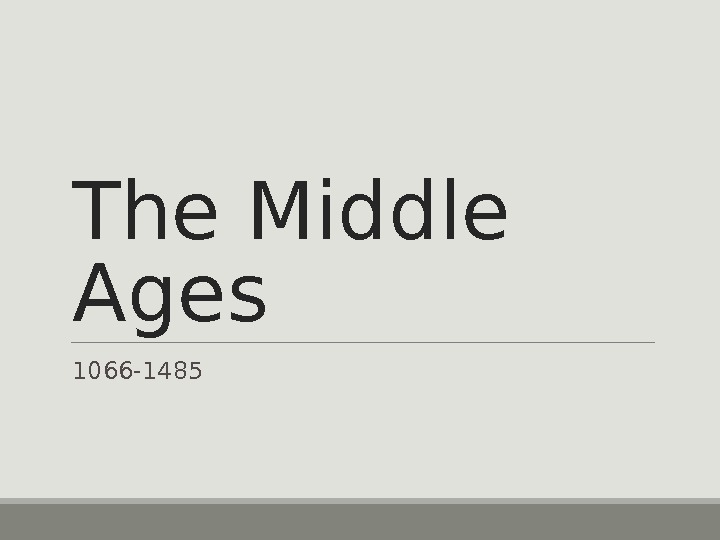
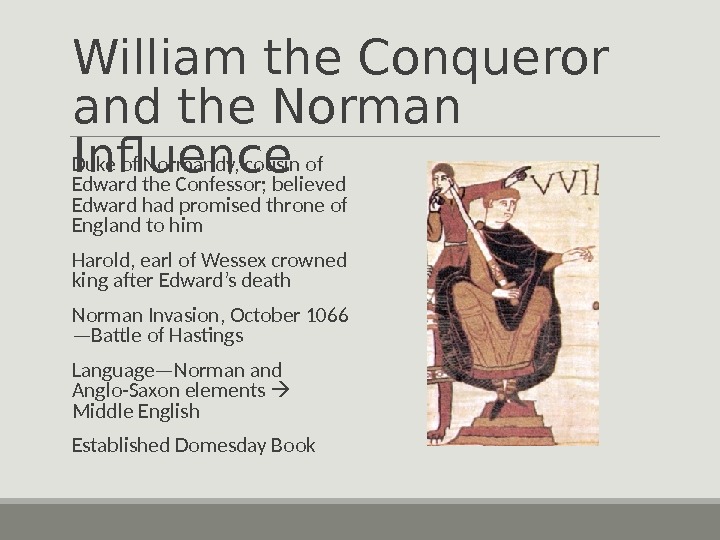

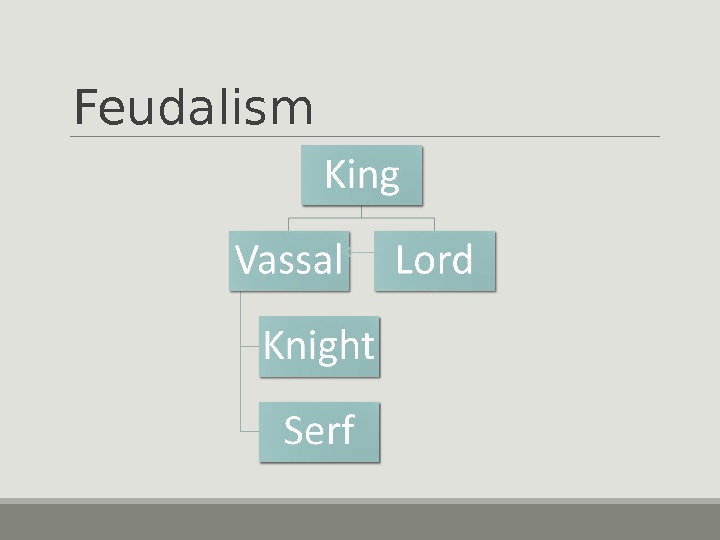

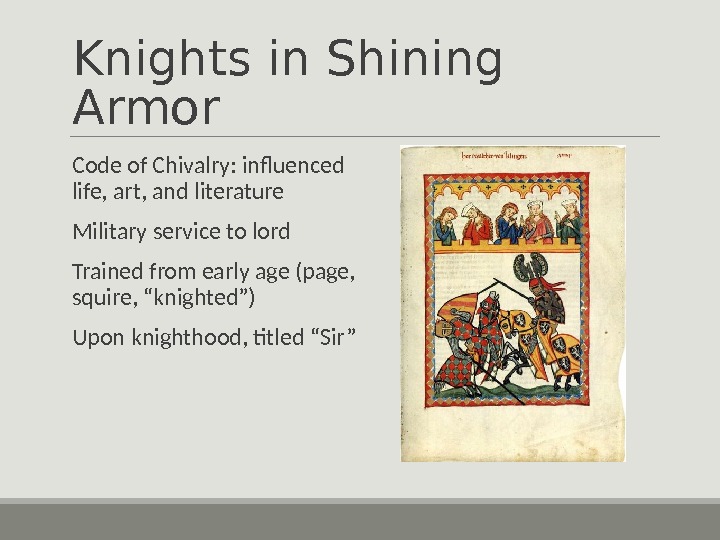
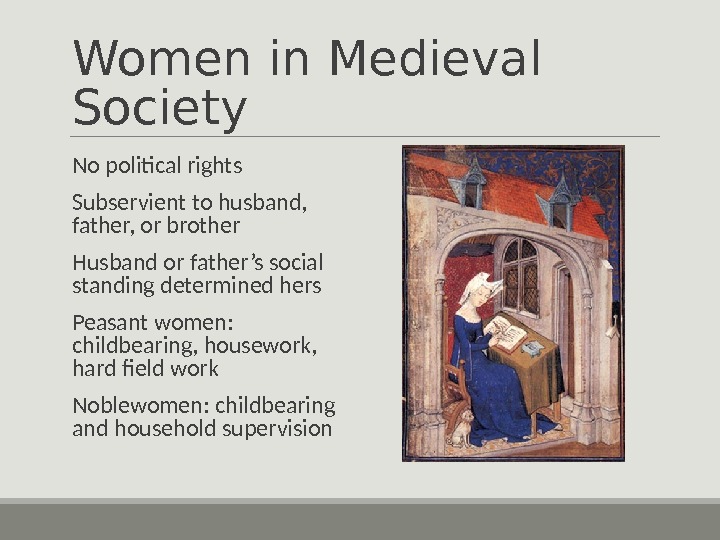

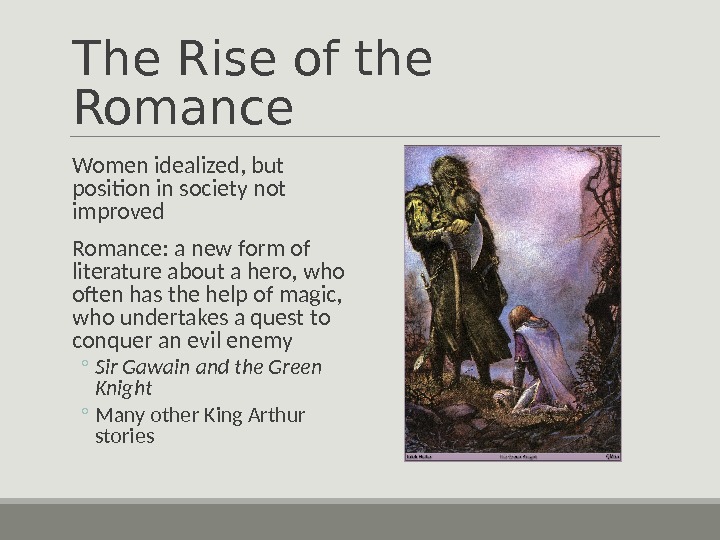
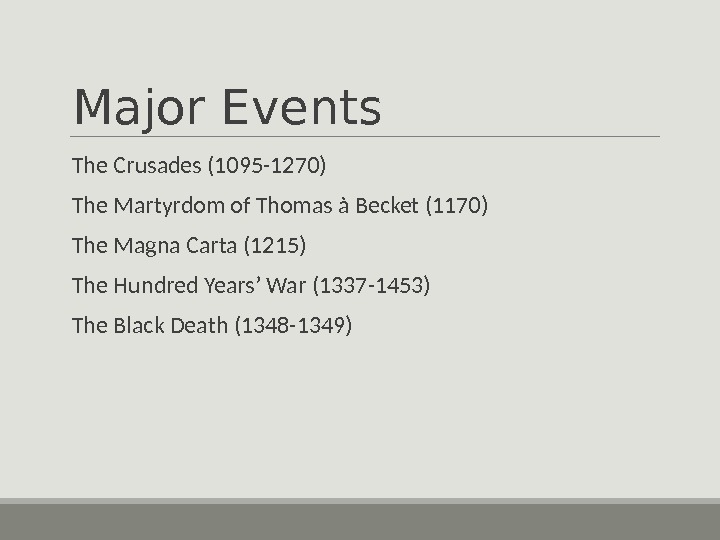
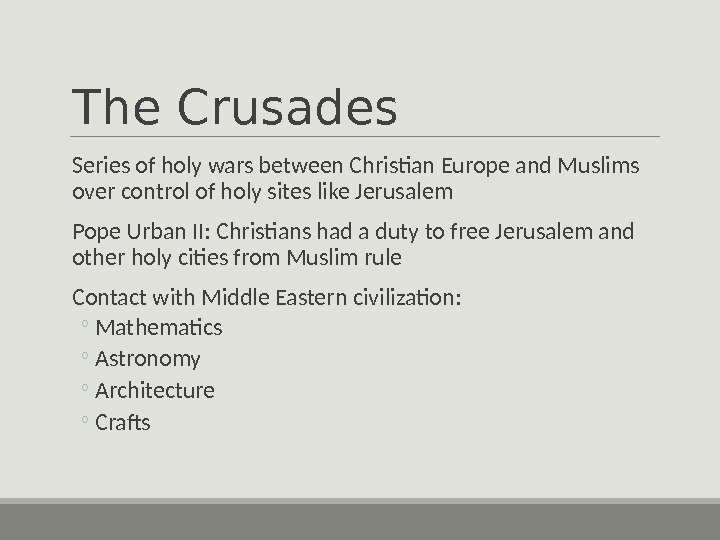

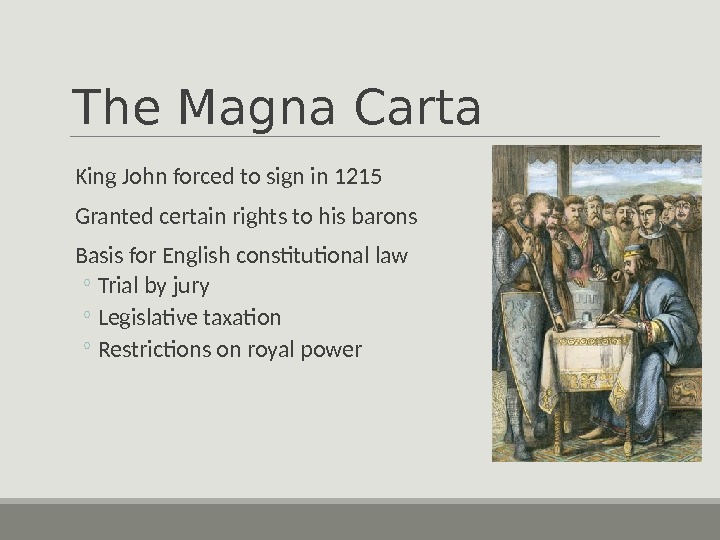
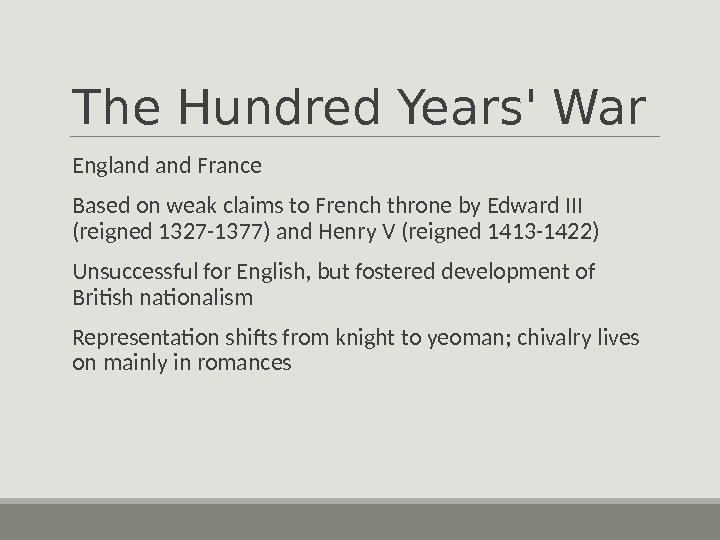
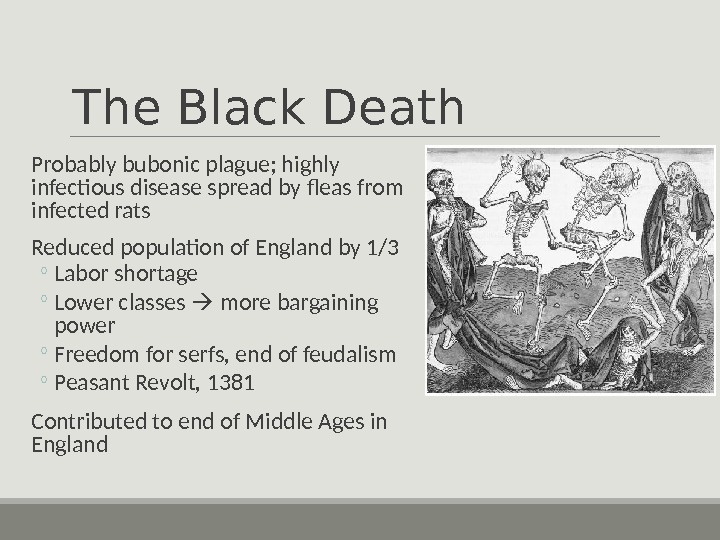

- Размер: 987.5 Кб
- Количество слайдов: 16
Описание презентации The Middle Ages 1066 -1485 William the по слайдам
 The Middle Ages 1066 —
The Middle Ages 1066 —
 William the Conqueror and the Norman Influence Duke of Normandy, cousin of Edward the Confessor; believed Edward had promised throne of England to him Harold, earl of Wessex crowned king after Edward’s death Norman Invasion, October 1066 —Battle of Hastings Language—Norman and Anglo-Saxon elements Middle English Established Domesday Book
William the Conqueror and the Norman Influence Duke of Normandy, cousin of Edward the Confessor; believed Edward had promised throne of England to him Harold, earl of Wessex crowned king after Edward’s death Norman Invasion, October 1066 —Battle of Hastings Language—Norman and Anglo-Saxon elements Middle English Established Domesday Book
 The Normans Change England William and his progeny remain dukes of Normandy and kings of England French = language of aristocracy Introduced feudalism, which displaced the comitatus
The Normans Change England William and his progeny remain dukes of Normandy and kings of England French = language of aristocracy Introduced feudalism, which displaced the comitatus
 Feudalism
Feudalism
 Vassals “ The bond between lord and vassal was affirmed or reaffirmed by the ceremony of homage. The vassal knelt, placed his clasped hands within those of his master, declared, ‘Lord, I become your man, ’ and took an oath of fealty. The lord raised him to his feet and bestowed on him a ceremonial kiss. The vassal was thenceforth bound by his oath ‘to love what his lord loved and loathe what he loathed, and never by word or deed do aught that should grieve him. ” — Morris Bishop, historian
Vassals “ The bond between lord and vassal was affirmed or reaffirmed by the ceremony of homage. The vassal knelt, placed his clasped hands within those of his master, declared, ‘Lord, I become your man, ’ and took an oath of fealty. The lord raised him to his feet and bestowed on him a ceremonial kiss. The vassal was thenceforth bound by his oath ‘to love what his lord loved and loathe what he loathed, and never by word or deed do aught that should grieve him. ” — Morris Bishop, historian
 Knights in Shining Armor Code of Chivalry: influenced life, art, and literature Military service to lord Trained from early age (page, squire, “knighted”) Upon knighthood, titled “Sir”
Knights in Shining Armor Code of Chivalry: influenced life, art, and literature Military service to lord Trained from early age (page, squire, “knighted”) Upon knighthood, titled “Sir”
 Women in Medieval Society No political rights Subservient to husband, father, or brother Husband or father’s social standing determined hers Peasant women: childbearing, housework, hard field work Noblewomen: childbearing and household supervision
Women in Medieval Society No political rights Subservient to husband, father, or brother Husband or father’s social standing determined hers Peasant women: childbearing, housework, hard field work Noblewomen: childbearing and household supervision
 Chivalry and Courtly Love Chivalry: system of ideals and social codes governing the behavior of knights and gentlewomen ◦ Oath of Loyalty to overlord ◦ Observing certain rules of warfare ◦ Adoring a particular lady = Courtly Love ◦ Non-sexual ◦ Wear lady’s colors in battle ◦ Glorify her in words, be inspired by her ◦ Lady remains pure and out of reach; set above admirer
Chivalry and Courtly Love Chivalry: system of ideals and social codes governing the behavior of knights and gentlewomen ◦ Oath of Loyalty to overlord ◦ Observing certain rules of warfare ◦ Adoring a particular lady = Courtly Love ◦ Non-sexual ◦ Wear lady’s colors in battle ◦ Glorify her in words, be inspired by her ◦ Lady remains pure and out of reach; set above admirer
 The Rise of the Romance Women idealized, but position in society not improved Romance: a new form of literature about a hero, who often has the help of magic, who undertakes a quest to conquer an evil enemy ◦ Sir Gawain and the Green Knight ◦ Many other King Arthur stories
The Rise of the Romance Women idealized, but position in society not improved Romance: a new form of literature about a hero, who often has the help of magic, who undertakes a quest to conquer an evil enemy ◦ Sir Gawain and the Green Knight ◦ Many other King Arthur stories
 Major Events The Crusades (1095 -1270) The Martyrdom of Thomas à Becket (1170) The Magna Carta (1215) The Hundred Years’ War (1337 -1453) The Black Death (1348 -1349)
Major Events The Crusades (1095 -1270) The Martyrdom of Thomas à Becket (1170) The Magna Carta (1215) The Hundred Years’ War (1337 -1453) The Black Death (1348 -1349)
 The Crusades Series of holy wars between Christian Europe and Muslims over control of holy sites like Jerusalem Pope Urban II: Christians had a duty to free Jerusalem and other holy cities from Muslim rule Contact with Middle Eastern civilization: ◦ Mathematics ◦ Astronomy ◦ Architecture ◦ Crafts
The Crusades Series of holy wars between Christian Europe and Muslims over control of holy sites like Jerusalem Pope Urban II: Christians had a duty to free Jerusalem and other holy cities from Muslim rule Contact with Middle Eastern civilization: ◦ Mathematics ◦ Astronomy ◦ Architecture ◦ Crafts
 Martyrdom of Thomas Becket Thomas à Becket: c. 1118 -1170 Norman chancellor (prime minister) to King Henry II (reigned 1154 -1189) King a vassal to Christian church; pope very powerful Henry appointed Becket to Archbishop of Canterbury Becket took his job seriously, sided with pope Four knights of Henry’s murdered Becket in the cathedral at Canterbury Becket canonized a saint
Martyrdom of Thomas Becket Thomas à Becket: c. 1118 -1170 Norman chancellor (prime minister) to King Henry II (reigned 1154 -1189) King a vassal to Christian church; pope very powerful Henry appointed Becket to Archbishop of Canterbury Becket took his job seriously, sided with pope Four knights of Henry’s murdered Becket in the cathedral at Canterbury Becket canonized a saint
 The Magna Carta King John forced to sign in 1215 Granted certain rights to his barons Basis for English constitutional law ◦ Trial by jury ◦ Legislative taxation ◦ Restrictions on royal power
The Magna Carta King John forced to sign in 1215 Granted certain rights to his barons Basis for English constitutional law ◦ Trial by jury ◦ Legislative taxation ◦ Restrictions on royal power
 The Hundred Years’ War England France Based on weak claims to French throne by Edward III (reigned 1327 -1377) and Henry V (reigned 1413 -1422) Unsuccessful for English, but fostered development of British nationalism Representation shifts from knight to yeoman; chivalry lives on mainly in romances
The Hundred Years’ War England France Based on weak claims to French throne by Edward III (reigned 1327 -1377) and Henry V (reigned 1413 -1422) Unsuccessful for English, but fostered development of British nationalism Representation shifts from knight to yeoman; chivalry lives on mainly in romances
 The Black Death Probably bubonic plague; highly infectious disease spread by fleas from infected rats Reduced population of England by 1/3 ◦ Labor shortage ◦ Lower classes more bargaining power ◦ Freedom for serfs, end of feudalism ◦ Peasant Revolt, 1381 Contributed to end of Middle Ages in England
The Black Death Probably bubonic plague; highly infectious disease spread by fleas from infected rats Reduced population of England by 1/3 ◦ Labor shortage ◦ Lower classes more bargaining power ◦ Freedom for serfs, end of feudalism ◦ Peasant Revolt, 1381 Contributed to end of Middle Ages in England
 Image/Video Credits Slide 2: William the Conqueror from the Bayeux Tapestry. Public domain. Slide 3: Animated Bayeux Tapestry , via You. Tube. Slide 7: Codex 081 Walther von Klingen, via Wikipedia. Public domain. Slide 8: Christine de Pizan Writing. Public domain. Slide 9: “Chivalry. ” http: //blogs. mit. edu/CS/blogs/eialba/archive/2007/08/16/65242. aspx Slide 10: The Green Knight by Julek Heller. http: //www. webgalactic. net/clarkscenter/pics/lj_julek_heller/index. html Slide 14: Murder of Thomas Becket , 15 th century manuscript, Lambeth Palace Library, London. Public domain. Slide 15: Colorized engraving of King John signing the Magna Carta. © Bettmann/Corbis. Fair use for educational purposes. Slide 17: A Dance of Death , woodcut attr. to Hans Holbein the Younger from Liber Chronicarum. Public domain.
Image/Video Credits Slide 2: William the Conqueror from the Bayeux Tapestry. Public domain. Slide 3: Animated Bayeux Tapestry , via You. Tube. Slide 7: Codex 081 Walther von Klingen, via Wikipedia. Public domain. Slide 8: Christine de Pizan Writing. Public domain. Slide 9: “Chivalry. ” http: //blogs. mit. edu/CS/blogs/eialba/archive/2007/08/16/65242. aspx Slide 10: The Green Knight by Julek Heller. http: //www. webgalactic. net/clarkscenter/pics/lj_julek_heller/index. html Slide 14: Murder of Thomas Becket , 15 th century manuscript, Lambeth Palace Library, London. Public domain. Slide 15: Colorized engraving of King John signing the Magna Carta. © Bettmann/Corbis. Fair use for educational purposes. Slide 17: A Dance of Death , woodcut attr. to Hans Holbein the Younger from Liber Chronicarum. Public domain.
